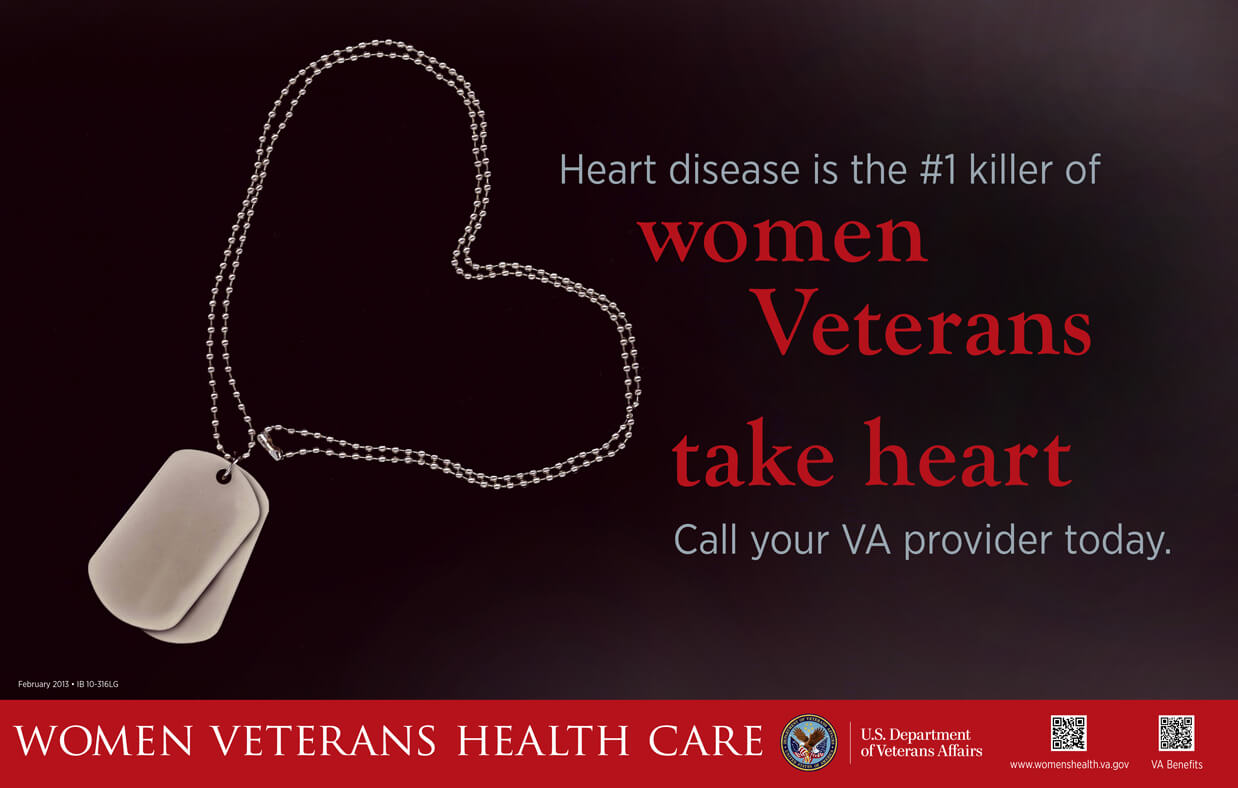 BOSTON — Depression and anxiety can be debilitating on their own. For women veterans, the conditions raise an additional concern: They significantly increase the risk of coronary artery disease (CAD)—the leading cause of death in the United States.
BOSTON — Depression and anxiety can be debilitating on their own. For women veterans, the conditions raise an additional concern: They significantly increase the risk of coronary artery disease (CAD)—the leading cause of death in the United States.
New research published in the Journal of Women’s Health “found that midlife and older women veterans with depression had a 60% greater chance of having coronary artery disease than those without depression,” according to lead author Megan Gerber, MD, medical director of women’s health at the VA Boston Healthcare System.1
Multiple mental health diagnoses compound the problem. “After controlling for demographic variables, smoking, diabetes and obesity, each mental health diagnosis increased the odds of CAD by 44%,” Gerber told U.S. Medicine. The diagnostic clusters demonstrating the highest association with CAD were depressive disorders, anxiety disorders and psychotic disorders.
The researchers analyzed data from 157,195 women over age 45 who received care through the VA in 2009. They found that depression and smoking had a similar association with CAD, with smoking increasing the odds of the disease by 68% and depression by 60%.
Gerber explained that many mechanisms might affect the correlation between mental health and CAD, including behavioral and lifestyle factors such as lack of exercise, poor diet and nonadherence to medication regimens. Biologic dysregulations such as immune-inflammatory changes and hypothalamic-pituitary-adrenal axis functions also can play a role, she noted.
“Mounting evidence suggests that the physiologic changes that occur with mental health conditions contribute to CAD equally, if not more, than lifestyle factors,” Gerber said.
The increased risk of CAD contributes to an already complex health profile for many women veterans. The largest group of women using VA healthcare are between 45 and 64 years of age, the point when the risk of cardiovascular disease (CVD) of all types increase markedly for women, the study authors pointed out. In the study, 31% of women veterans also had at least one mental health diagnosis.
In addition, “women veterans who use VA are known to have a high prevalence of several CVD risk factors including hypertension, hyperlipidemia, diabetes and obesity,” said Gerber. “We know from prior research that, when compared to civilians, women veterans report higher rates of depressive and anxiety disorders. They are also more likely to smoke than male veterans and nonveteran women.”
While depression also increases the risk of CAD for men, the researchers focused on women veterans for this study, because they tend to present differently with heart disease and are more likely to have diagnoses of depression or anxiety, Gerber said.
“To advance care for women veterans, understanding all of the potential risk factors for CVD will help us tailor programming and interventions. This work highlights the degree to which mental health multimorbidity worsens heart disease risk for this group,” she added.
Modifiable Factors
The study also identified potentially modifiable factors that increase the risk of cardiovascular disease in women veterans, starting with taking care of their mental health. Previous studies have shown that anxiety, particularly when combined with depression, increases the risk of mortality in individuals with CAD.
“Our study suggests that women may be able to reduce their risk for heart disease by getting the help they need for depression or other mental health issues, along with traditional health and lifestyle interventions,” Gerber said in a release. “This is good news for women veterans enrolled in the VA health care system. That’s because here at VA we’re focusing more and more on women’s heart health.”
Gerber recommended that women veterans maintain or return to regular exercise. “Women in the military have their exercise program automatically baked into their daily routine. But once they leave the military, routine exercise becomes optional and can sometimes fall by the wayside.” Good diet, stress management and taking other steps to promote emotional well-being are also important, she said.
As smoking amplifies the risk of CAD in women veterans, quitting may have even greater benefits than previously recognized. Studies have found, however, that women veterans are less likely to receive nicotine replacement therapy than men, the authors said. Consequently, they suggested that “smoking cessation treatments need to be tailored to meet the needs of women veterans with mental health multimorbidity,” though specific ways to do that have yet to be identified.
“Mental health conditions, and depression and anxiety in particular, are so common but are often overlooked as unique CVD risk factors,” Gerber said. Collaborative care models that combine primary care and mental/behavioral health may help the VA improve care for women veterans by addressing both issues together.
“Women are often caregivers and often do not have time to prioritize self-care, therefore innovative programs that allow interdisciplinary care at one visit or virtual care through video visits also have potential to address risk of CVD/CAD,” Gerber said.
Education also has to play a part in reducing the risk of CAD, particularly among women veterans with mental health diagnoses. “In a 2009 study, women veterans at increased risk for CAD demonstrated low knowledge and awareness of cardiovascular risk factors and treatment. VA has engaged in enhanced educational programming and outreach through a partnership with the AHA [American Heart Association] and is developing novel gender-specific programs to address heart health,” the authors wrote.

1Gerber MR, King MW, Iverson KM, Pineles SL, Haskell SG. Association Between Mental Health Burden and Coronary Artery Disease in U.S. Women Veterans Over 45: A National Cross-Sectional Study. J Womens Health (Larchmt). 2017 Oct 5.

